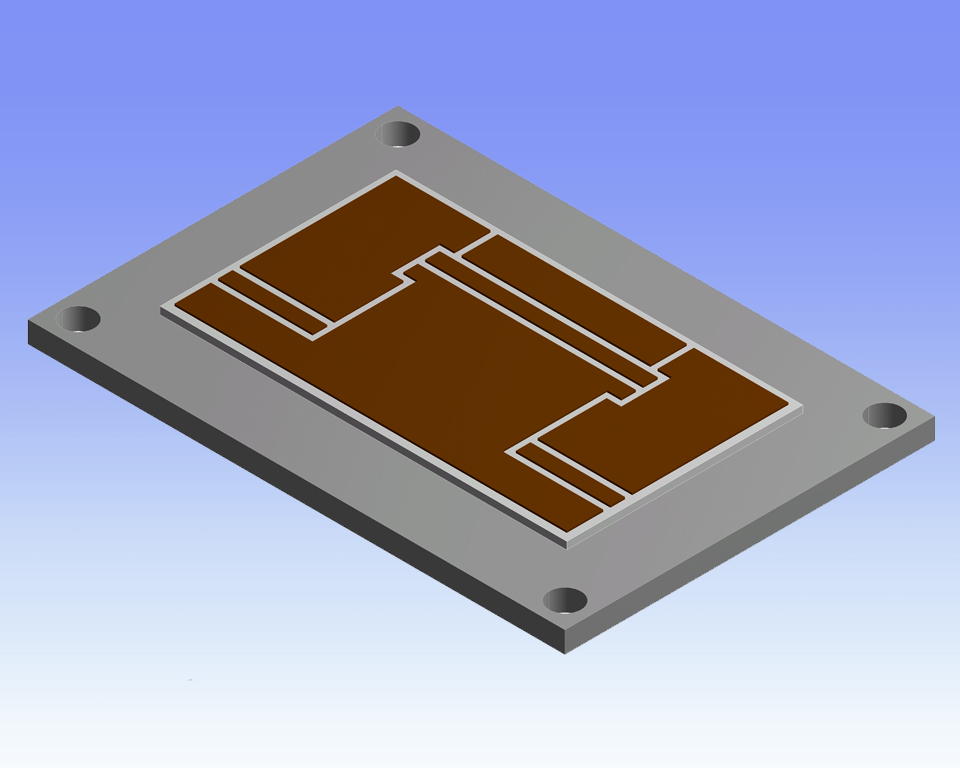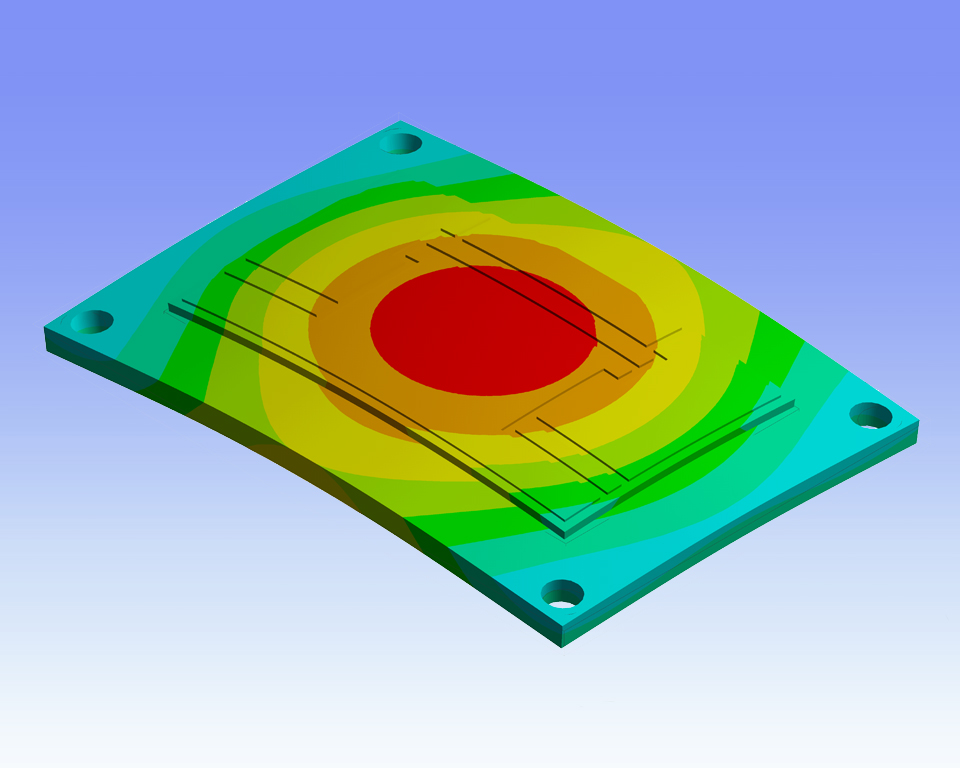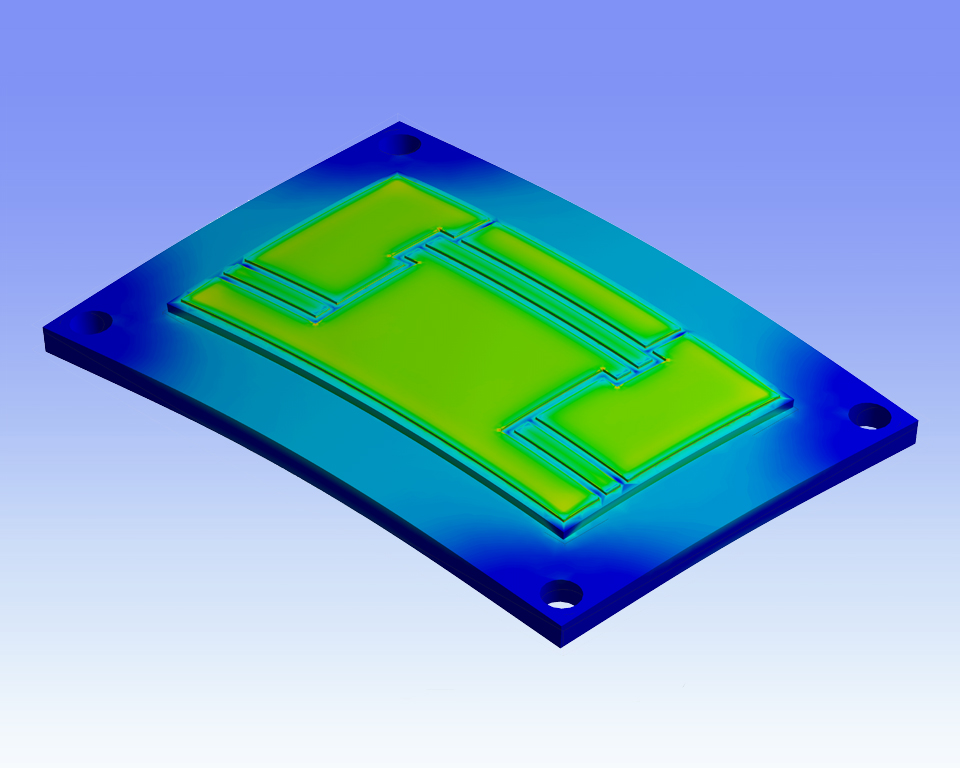Electric and electromagnetic simulation
- Static and transient simulations (2D and 3D)
- Electric field strength distribution
- Identification of critical areas on the modules due to enhancement of the electric field strength
- Parametric studies of dependencies with respect to the field distribution
- Electromagnetic losses in high frequency applications
Wide parameter studies of power coupling through coils
- Illustration of the magnetic field distribution
Electronics cooling design
- Computational fluid dynamics (multi-fluid)
- Radiation and Joule heating
- Steady state and transient simulation
- Detailed chip, board, and system level within one simulation
- Complex geometries and 3D component assemblies
Lifetime modelling and prediction
- Mission profiles and load cycles/ scenarios - beyond rainflow
- Material parameterization and extraction; process/history aware strain fields
- Towards Digital Twin for temperature shock and power cycling; Model validation
Simulation – design – optimization – verification
- Power module design based on simulation
- Optimization and analysis of structures and arrangements via simulation
- Verification of test structures by various in-house measurement possibilities, e.g. static and lock-in thermography, indirect thermal impedance and resistance (Rth, Zth/ different coolants, flow rates, temperatures), etc.
- Material characterization for realistic material properties as input for simulations (for example nano-indentation, tensile tests at different temperatures)
Software used in simulation
- Always up-to-date versions of simulation software for multiphysics and electromagnetic simulation (e.g., ANSYS Emag, Maxwell, Q3D, Fluent)
 Fraunhofer Institute for Integrated Systems and Device Technology IISB
Fraunhofer Institute for Integrated Systems and Device Technology IISB


